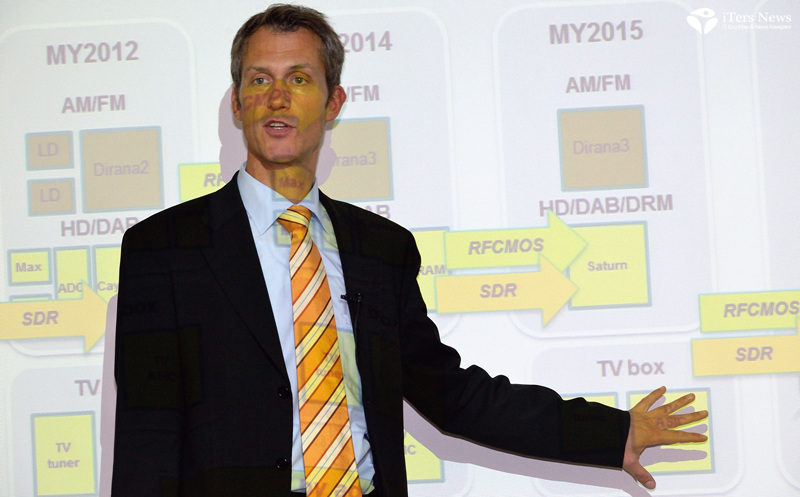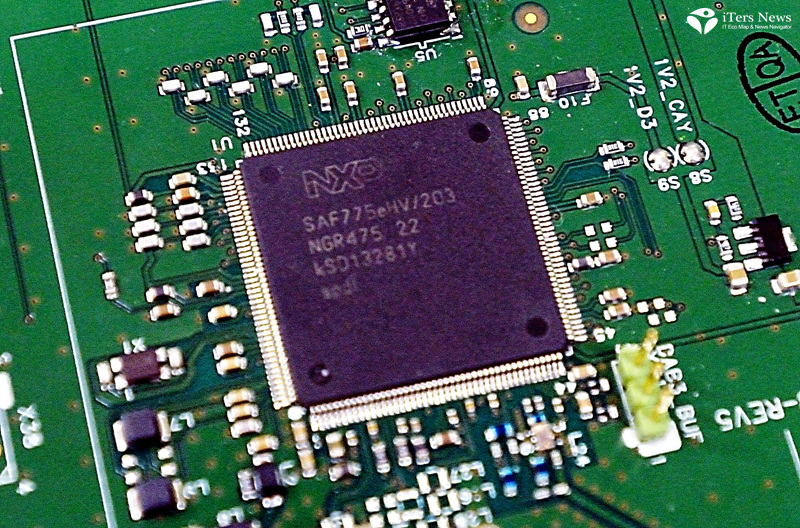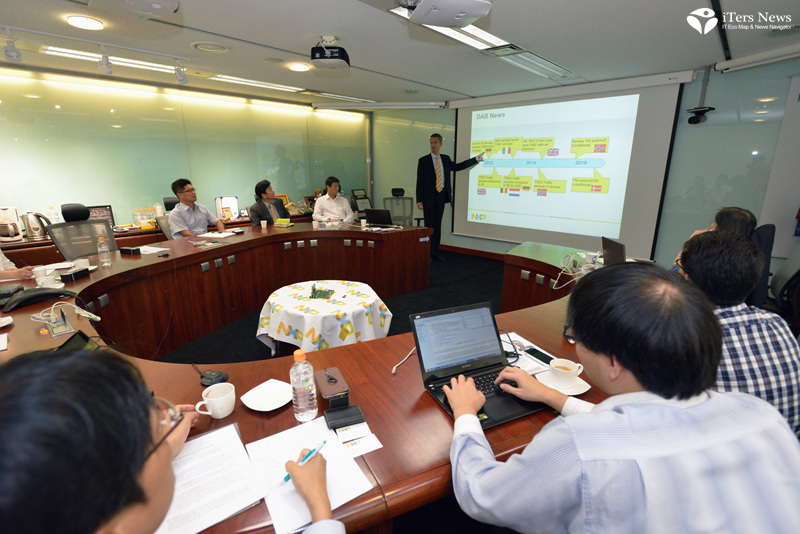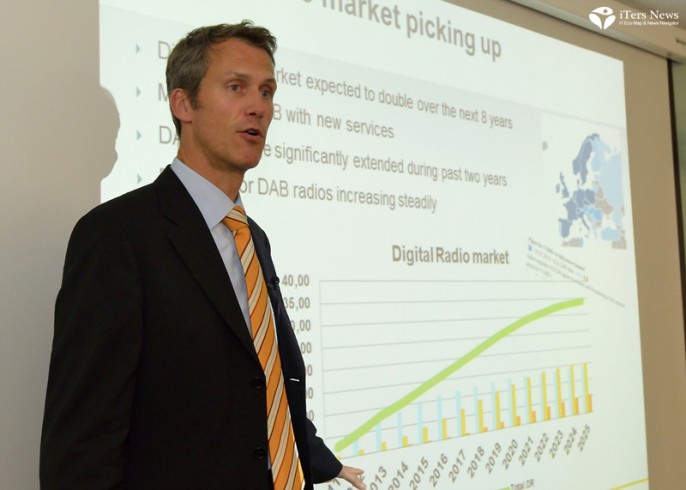(iTers News) - In-vehicle digital radio market is picking up rapidly, as countries in Europe and elsewhere are aggressively rolling out their respective digital radio broadcasting services, including European standard DAB/DAB+, DRM, HD Radio, and T-DMB.
The availability of data and information services on the digital radio networks is also driving up the rapid adoption of digital radio technology into cars, enabling car drivers to see and check important messages like natural disaster alerts or real-time road traffic conditions on a car infotainment system’s touch-capable screen.
The wider area coverage of the digital radio network over that of LTE or 3G cellular networks is another reason why digital radio services are rapidly catching on.
“Many people are expecting Internet will affect it. But, that’s not the case. Digital ration services are now picking up, because it can deliver additional information and its area coverage are higher than GSM and LTE networks,” said Lars Boysen, product marketing manager with NXP Semiconductors
True enough, as HD radio market gets matured, DAB market is taking off in Europe. For example, Germany is already offering nationwide digital radio services –DAB/DAB+ multiplex, offering 20 new programs. Italy is also airing DAB+ services.
On top of that, TPEG traffic data services are already in wide use across Europe, brightening the outlook for digital radio service market. Countries like Germany, Belgium, the Netherlands, and the U.K. are offering the TPEG traffic services, for example.
As the U.K. is scheduled to switch off analog FM radio broadcasting services in 2019, 55% of cars in the U.K. are already endorsing DAB radio tuner as a standard.
Norway and Denmark are scheduled to turn off the FM services in 2018 to launch DAB services.
To capitalize on the rapid adoption of the digital radio broadcasting service, NXP Semiconductors unveiled a software-defined-radio, or SDR-based audio and radio integrated single chip that has built-in tuners for DRM, DAB and HD radio signals
Codenamed as Saturn, the audio and radio single chip is a sort of multi-standard , multi-tuner SDR coprocessor that combines a multitude of front-end digital radio tuner circuitries and a back-end DSP-based baseband circuitry on a single piece of silicon wafer.
Software defined radio

What makes differences between them is that Saturn is a software-based programmable chip capable of decoding all the major digital terrestrial radio standards like DRA, HD Radio, and DAB/DAB+/T-DMB, allowing system developers or car makers to program, or define a radio standard that matches that of the country
On the contrary, the Dirana 3 is a single integrated hardwired multi-tuner chip.
The rollout of the single integrated Saturn chip represents NXP’s efforts to keep up with irreversible trends in the in-vehicle digital car radio and audio system markets.
As in-vehicle car radio system is going digital, it is requiring car makers, radio ad audio system vendors and chip makers alike to embrace multi-tuner and multi-standard systems. , especially forcing them 8 to 10 discrete chips into the car audio and radio system.
That’s where the forte of the integrated chip system comes in, as it can cut back chip-making costs, logistics costs, and system footprints by integrating all different standards of multiple tuner circuitries into a single piece of silicon chip.
Car makers’ rapid embrace of the high-quality car infotainment system is accelerating the single one chip integration, too.
Digital radio services take off

“New features are also driving more tuners and more standards into cars. We have a capacitive touch screen in a car. On the one hand, we have better quality traffic services. Navigation systems are more or less commodity right now. The differences are made by traffic services,” said product marketing manager Lars Boysen.
“We have area coverage also increasing. So, that means that digital radio is complementing the analog radio with the coverage. That means several programs are sent simultaneously by analog radio and digital radio. So, new features like blending came in. That can really blend FM/AM, DAB and backward. Advanced user interfaces like touch screen, which we have on a car, makes it necessary to offer more radio data. And you can have data service on the car like the latest news services. Those all services are requiring dual, triple, and multiple tuners. Right now, the system has 8, or 10 chips to realize the functions,” added he.
Car drivers’ preferences for better audio quality like circular surround sounds are also requiring more and more audio quality processing algorithm to be integrated into the chips, including active noise cancellation and engine sound enhancements.
The integration isn’t an easy work, however, because it not only requires more powerful DSP, but also calls for chip makers to simultaneoulsy design and fabricate the analog and digital domains on a single chip with two different manufacturing processes.
NXP is better poised to achieve the integration, as it has RF CMOS process technology.
Loking forward, NXP has an ambitious roadmap for a single chip solution that comes comeplete with all analog and digital radio tuners as well as mobile TV tuners.





